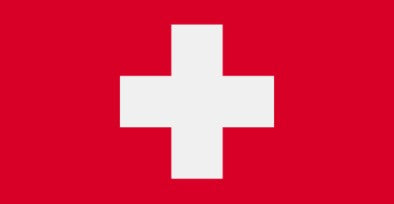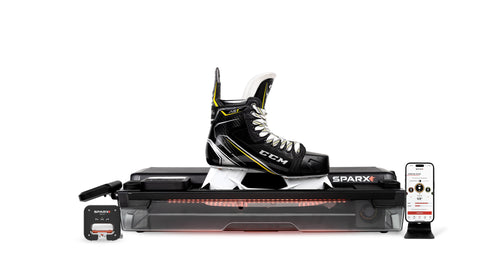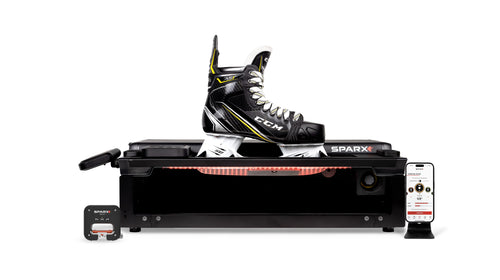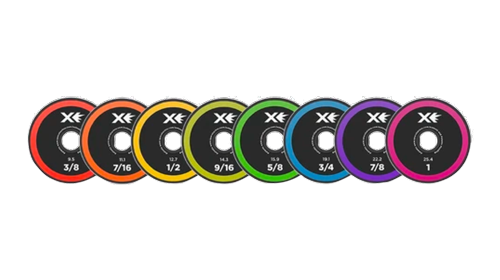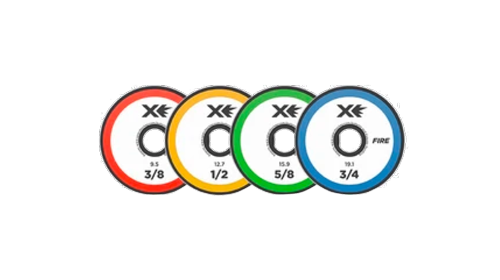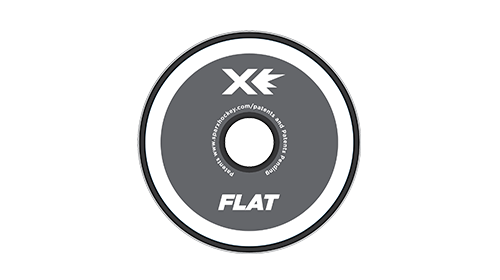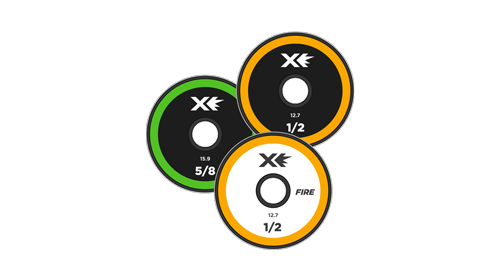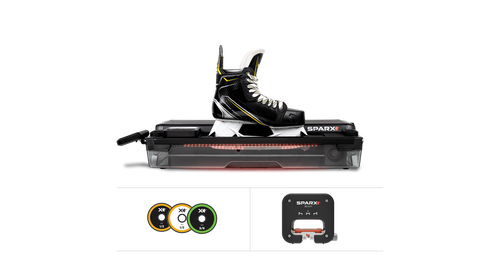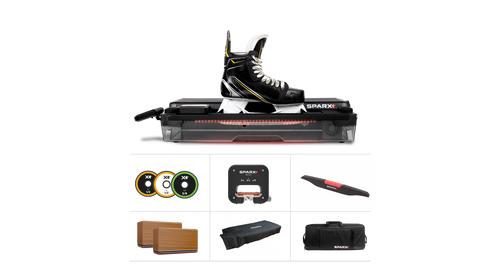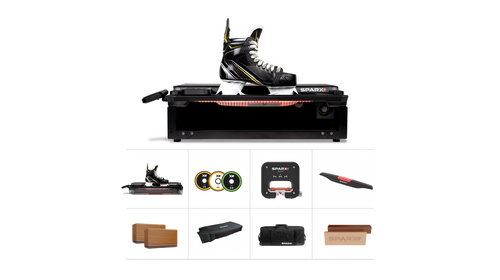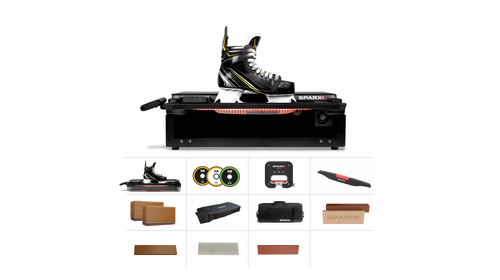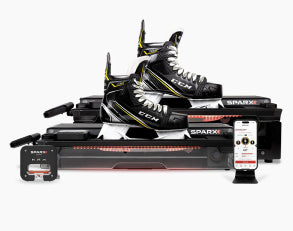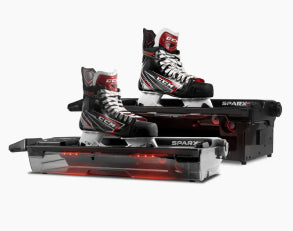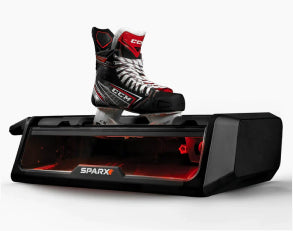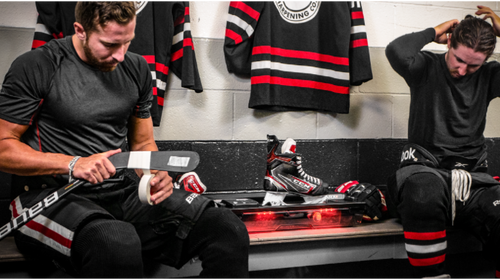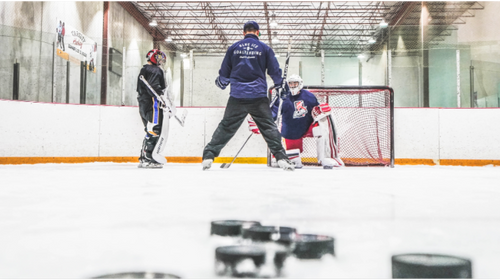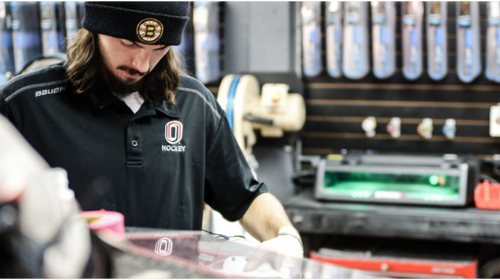
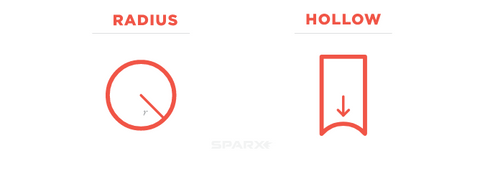
Vielleicht sind Sie schon einmal in Ihren örtlichen Hockeyladen gegangen, um Ihre Schlittschuhe schleifen zu lassen, und der Typ hinter der Theke fragt: "Welche Mulde willst du?" Du gerätst in Panik und hast keine Ahnung, wovon er spricht, also platzt es schnell heraus: „Der Normalbürger.“
Das ist eine sehr häufige Antwort auf eine wichtige Frage, aber es ist nicht die richtig Antwort. Die Wahl der richtigen Hohlkehle ist eine wichtige Entscheidung beim Schlittschuhschleifen und allzu oft verstehen die Leute nicht ganz, wie die falsche Hohlkehle Ihre Leistung auf dem Eis dramatisch beeinträchtigen kann. Um die Vorteile eines perfekten Schlittschuhschleifens voll auszuschöpfen, müssen Sie zunächst das Konzept des Hohlradius oder RoH verstehen. Der Radius ist der Abstand vom Mittelpunkt eines Kreises zu seinem äußeren Rand (eine Messung) und eine Hohlkehle ist ein Schnitt oder eine Vertiefung in etwas. Beim Schlittschuhschleifen ist es die konkave Rille, die in die Unterseite der Schlittschuhoberfläche geschliffen wird. Wenn also jemand nach dem Hohlradius oder einfach „Hohlkehle“ fragt, bezieht er sich auf die Tiefe des Schnitts, der in die Unterseite unserer Kufe geschliffen wird.

Die Unterseite der Kufe, also die, die das Eis berührt, ist die Lauffläche. Der Grundgedanke dabei ist: Je flacher diese Lauffläche ist und alle anderen Faktoren unverändert bleiben, desto schneller gleitet der Schlittschuh über das Eis. Eine vollkommen flache Lauffläche wäre daher ideal für Höchstgeschwindigkeiten. Leider müssen die Läufer beim Hockey und Eiskunstlauf auch wenden und anhalten. Um Wenden und Anhalten zu ermöglichen, wird über die Länge der Lauffläche ein konkaves Profil (der Radius der Vertiefung) geschliffen. Diese konkave Oberfläche, oder genauer gesagt die Kanten dieser Oberfläche, bieten dem Läufer seitlichen (von Seite zu Seite) Halt im Eis, wodurch Wenden und Anhalten möglich (oder zumindest wesentlich einfacher) werden.

Wie also beeinflusst der Hohlradius die Leistung beim Eislaufen? Welchen Hohlradius sollten Sie wählen? Die Stärke des Bisses oder Griffs, den ein Spieler im Eis spürt, ist relativ zur Tiefe des Hohlradius. Der tiefere Hohlradius, der oben links gezeigt wird, bietet mehr Griff im Eis als der flachere Hohlradius, der rechts gezeigt wird. Es gibt jedoch einen Kompromiss, wenn Sie einen tieferen Hohlradius wählen. Ein tieferer Hohlradius führt dazu, dass die Kanten der Schlittschuhkufen tiefer in das Eis eindringen, was zu einem größeren Gleitwiderstand führt. Das bedeutet, dass sich ein tieferer Schnitt für den Spieler beim Eislaufen in einer geraden Linie langsamer anfühlt.
Es gibt noch weitere Faktoren, die bestimmen, wie sich ein Hohlradius auf dem Eis verhält. Da der Grip auf dem Eis davon abhängt, wie tief die Kufe des Schlittschuhs ins Eis eindringt, spielt auch das Gewicht eines Spielers eine große Rolle bei der Auswahl des richtigen Hohlradius.

Die typischen Jugendhockeyspieler (weniger Körpergewicht) fühlen sich wohl mit einem 1/2„Radius of Hollow und ältere Spieler (High School und höher, im Allgemeinen schwerer) fühlen sich wohler mit einem 5/8„Hohlradius.
Wenn Sie sich nicht sicher sind, welchen Hohlradius Sie ausprobieren sollen, sollten Sie die oben stehende Hohlradius-Empfehlung für Ihr Alter/Gewicht ausprobieren und dann mit mehr Grip oder mehr Gleitfähigkeit experimentieren, indem Sie verschiedene Hohlradien ausprobieren.

Manche Spieler bevorzugen einen stärkeren Biss (kleinerer Hohlradius, z. B. 1/2 Zoll oder kleiner) im Eis, weil sie das Gefühl haben, dass dies Folgendes ermöglicht:
- Härtere und aggressivere Kurven
- Besserer Biss im Eis für höhere Beschleunigung
- Besserer Halt auf dem Eis, zum Beispiel beim Kampf um die Position vor dem Tor
- Für Torhüter ist oft ein tieferes Profil erwünscht, um das Abstoßen und schnelle Bewegen im Torraum zu erleichtern.

Andere Spieler bevorzugen weniger Biss (einen größeren Hohlradius, zum Beispiel 5/8" oder mehr) im Eis, weil sie das Gefühl haben, dass ein flacheres Profil:
- Behält ausreichend Kante, um noch anzuhalten und zu wenden
- Bietet mehr Fehlertoleranz im Eis und die Fähigkeit, bei schnellen Richtungswechseln oder Driftbewegungen (z. B. beim Ausrichten eines One-Timers) etwas seitlich zu rutschen.
- Führt zu weniger Reibung und somit zu mehr Geschwindigkeit beim Gleiten
- Führt zu weniger Ermüdung, da weniger Reibung überwunden werden muss.
Interessant ist, dass NHL-Spieler im Durchschnitt auf viel flacheren Hohlradien skaten als der typische Freizeitspieler. Das zeigt, dass Spieler mit zunehmendem Gewicht und Können lernen, ihre Kanten effizienter zu nutzen und den Grip zugunsten eines besseren Gleitens zu opfern. Die Wahl des richtigen Hohlradius ist jedoch eine Frage der persönlichen Vorliebe und wir empfehlen Ihnen dringend, mit verschiedenen Hohlradien zu experimentieren, um die Größe zu finden, die sich für Sie richtig anfühlt.
Nachfolgend finden Sie einen umfassenden Überblick über die verschiedenen Hohlradius-Optionen von Sparx Hockey, sodass Sie sehen können, wo jeder Hohlradius auf der Skala „Griffigkeit vs. Gleitfähigkeit“ liegt.









